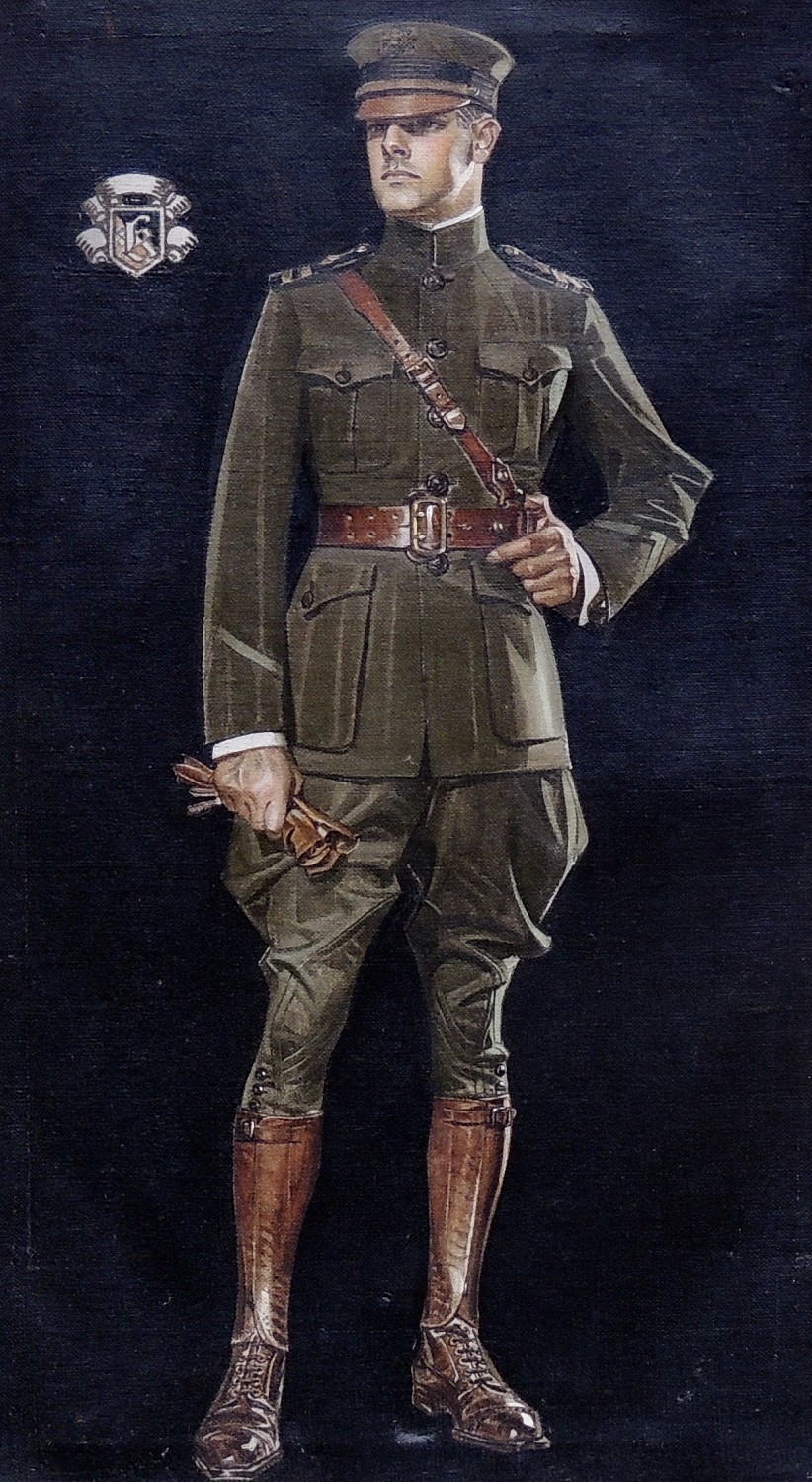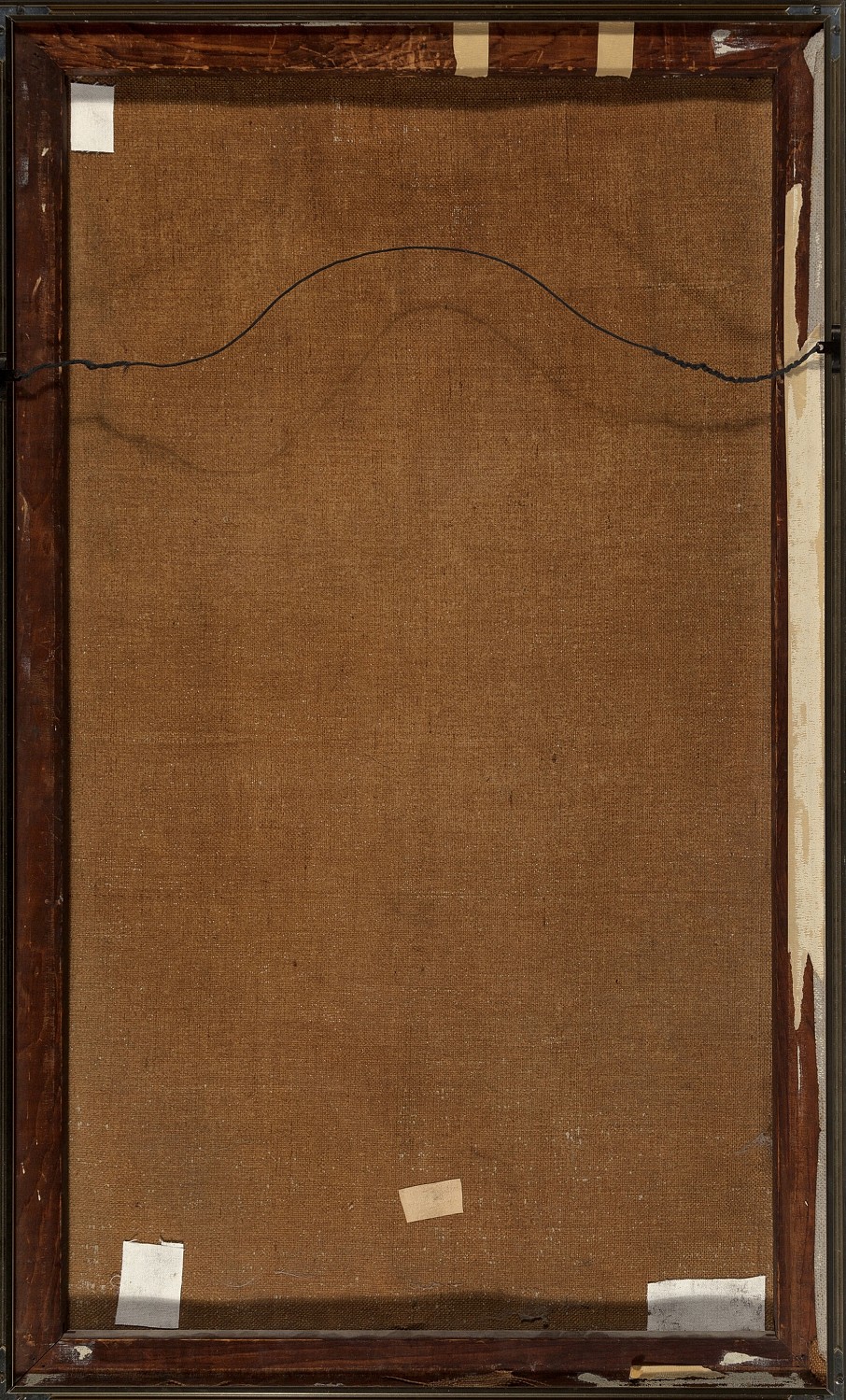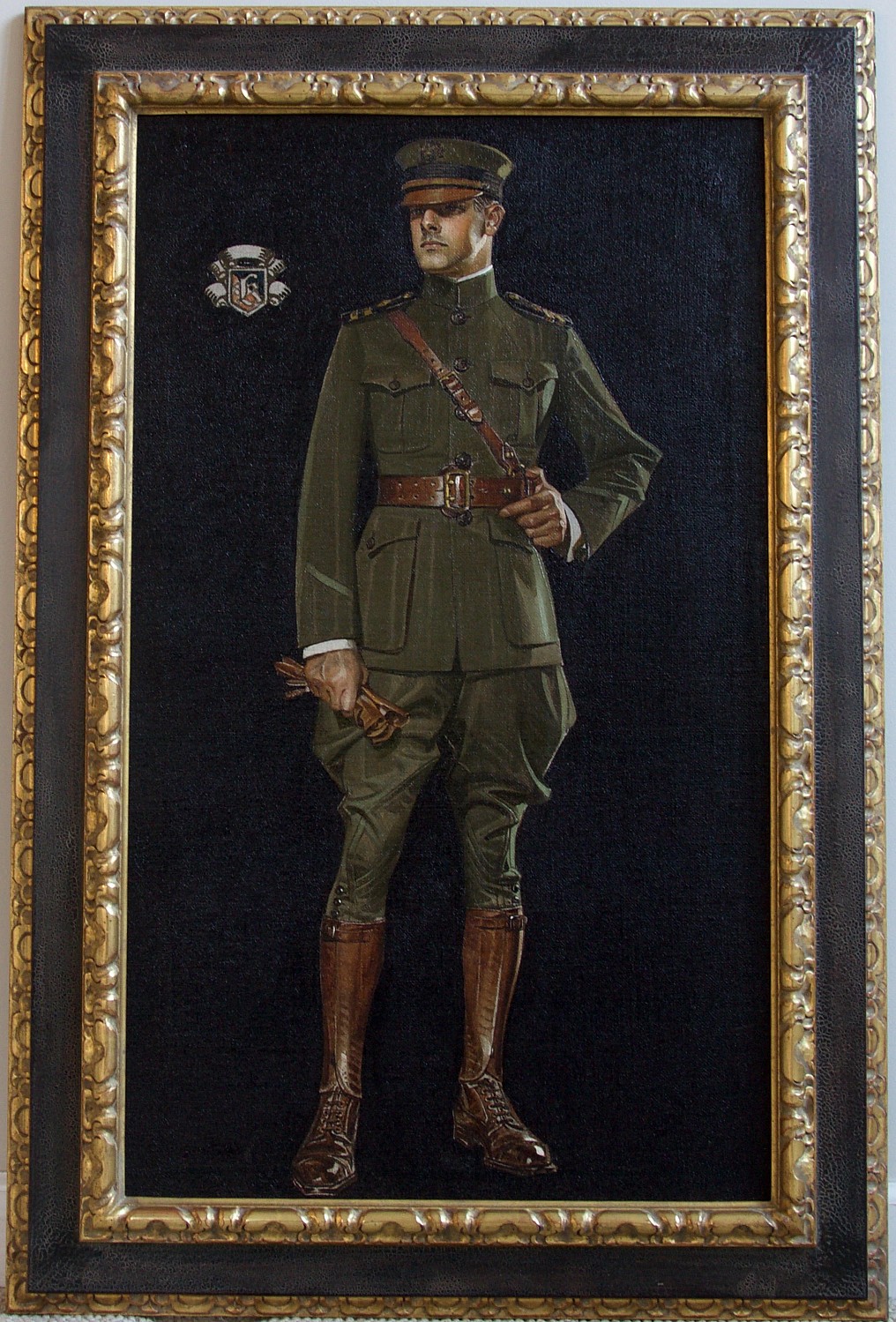"Soldier's Pride, House of Kuppenheimer advertisement" Lot no. 4284
By Joseph Christian Leyendecker (1874-1951)
1916-1917
40.00" x 24.00"
Oil on Canvas
REQUEST PRICE
PURCHASE REQUEST
Soldier's Pride was created as a component of Kuppenheimer's six-piece easel-backed World War I advertisement placards for in-store display. These pieces were expertly printed on a coated cardboard substrate so the black background would dramatically display the clothing item. Kuppenheimer & Hart Schaffner Marx were the two major manufacturers of military apparel during WWI & WWII. These images were very rarely used for advertising in America's mainstream periodicals - and the several known magazine appearances were always in trade journals or brochures specifically promoting military clothing.
The cardboard easel-backed placards measured approximately nineteen inches high and they appeared both in store windows and as point-of-purchase promotions near the cash registers. They all had the Kuppenheimer "K" in the upper left corner. Sometimes the units were produced with Kuppenheimer lettering below the image.
When America entered WWI in April 1917, Kuppenheimer was already manufacturing massive numbers of officer uniforms and apparel for enlisted personnel. This particular advertising campaign commenced in late 1916, and continued heavily until the end of 1917. Many Kuppenheimer stores displayed these patriotic advertising pieces through 1918. These Leyendecker showcards are coveted among collectors of US Military ephemera.
We would like to thank Bud Moon for his historical research on the usage of the present work.
Explore related art collections: Military/Soldiers / $100,000 & Above / Advertisements
See all original artwork by Joseph Christian Leyendecker
ABOUT THE ARTIST
Joseph Christian Leyendecker was born in Montabaur, Germany, and came to America at the age of eight. Showing an early interest in painting, he got his first job at 16 in a Chicago engraving house on the strength of some larger pictures he had painted on kitchen oilcloth. In the evenings after work, he studied under Vanderpoel at the Chicago Art Institute, and saved for five years to be able to go to France and attend the Academie Julian in Paris.
Upon his return, as a thoroughly trained artist with immense technical facility, Leyendecker had no difficulty in obtaining top commissions for advertising illustrations and cover designs for the leading publications. His first Post cover was done in 1899, and he did well over 300 more during the next 40 years. Among the most famous of these was his annual New Years Baby series.
His advertising illustrations made his clients famous. The Arrow Collar Man was a byword for the debonair, handsome male, and women wrote thousands of love letters to him in care of Cluett Peabody & Company. His illustrations for Kuppenheimer Clothes were equally successful in promoting an image of suited elegance. He was elected to the Society of Illustrators Hall of Fame in 1977.A major retrospective exhibition of Leyendecker's work was mounted at the Norman Rockwell Museum in Stockbridge, Massachusetts, in 1997-98.
Joseph Christian Leyendecker was born in Montabaur, Germany, and came to America at the age of eight. Showing an early interest in painting, he got his first job at 16 in a Chicago engraving house on the strength of some larger pictures he had painted on kitchen oilcloth. In the evenings after work, he studied under Vanderpoel at the Chicago Art Institute, and saved for five years to be able to go to France and attend the Academie Julian in Paris.
Upon his return, as a thoroughly trained artist with immense technical facility, Leyendecker had no difficulty in obtaining top commissions for advertising illustrations and cover designs for the leading publications. His first Post cover was done in 1899, and he did well over 300 more during the next 40 years. Among the most famous of these was his annual New Years Baby series.
His advertising illustrations made his clients famous. The Arrow Collar Man was a byword for the debonair, handsome male, and women wrote thousands of love letters to him in care of Cluett Peabody & Company. His illustrations for Kuppenheimer Clothes were equally successful in promoting an image of suited elegance. He was elected to the Society of Illustrators Hall of Fame in 1977.A major retrospective exhibition of Leyendecker's work was mounted at the Norman Rockwell Museum in Stockbridge, Massachusetts, in 1997-98.
Kent Steine





